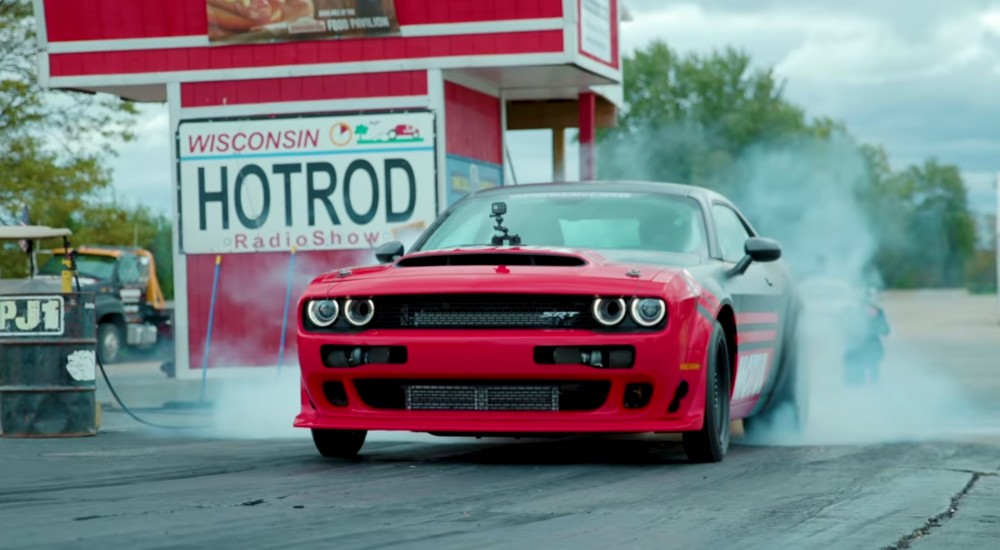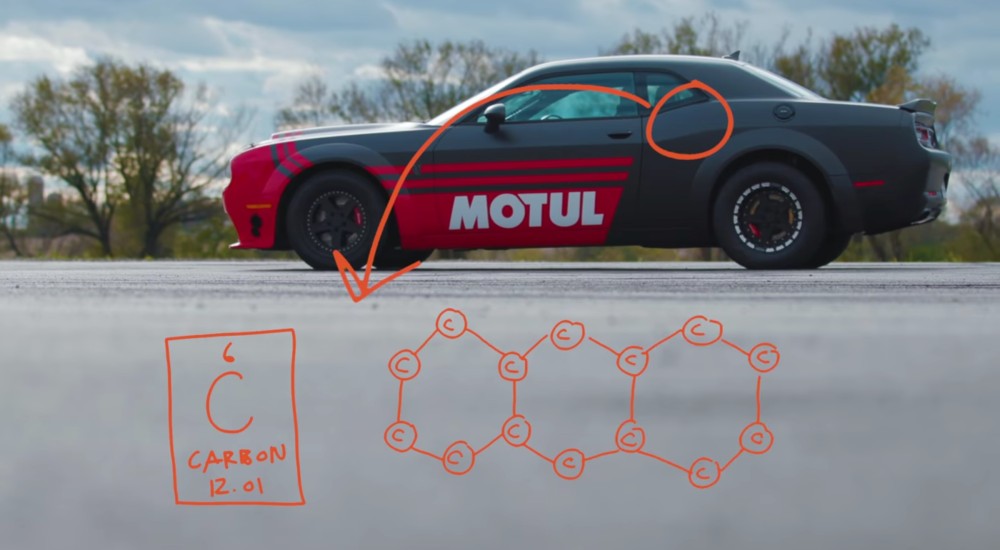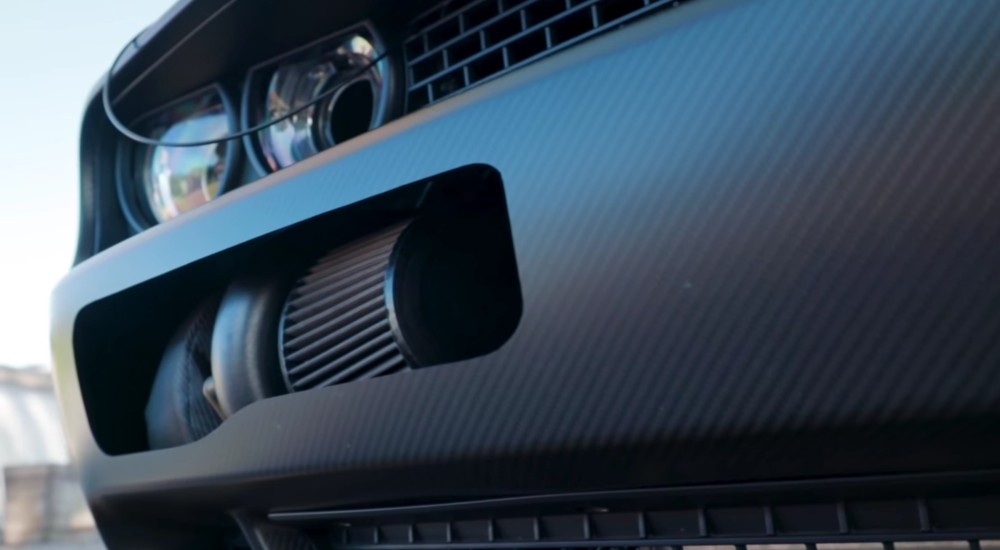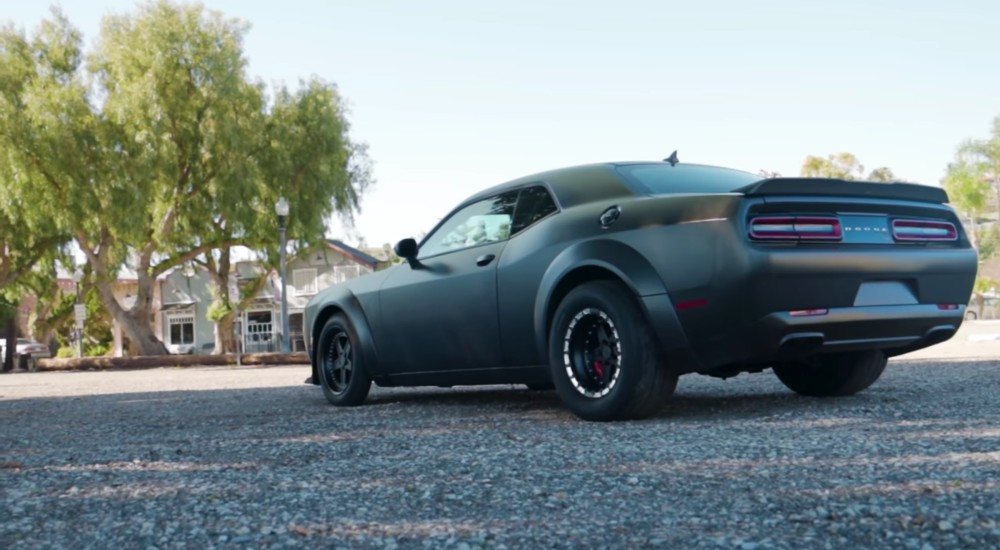‘Donut Media’ Takes Us Through Tour of Insane Demon
What happens when the panels and supercharger are replaced with carbon fiber and twin turbos? A 1,500-horse Demon, of course!
For one magical year, Dodge gave us all the ultimate Challenger: the Demon. The big monster upped the ante already put down by the Hellcat, resulting in an 800-plus-horsepower beast whose sole purpose was to annihilate everyone else on the drag strip. And that’s before a few Demon owners slapped on the goodies from the optional Demon Crate to take everything up to 11.
Sometimes, though, even that’s not enough. For SpeedKore, they took everything over 9,000, building the wildest Demon around. Donut Media’s Jeremiah Burton introduces us all to “Lucifer.”

“[SpeedKore is] in the business of making super-nice carbon fiber parts and building insane performance vehicles,” said Burton. “They always use the same, very complex recipe: reduce weight, increase horsepower. You can literally see that those are the two areas they focused on when they building this car. Full carbon-fiber body, and giving more the engine more power.”

The first half of the equation is replacing every body panel on the Demon with carbon-fiber copies. The result is a Demon with 15% less weight than the factory behemoth. But it’s not your cheap carbon fiber from eBay, though. The secret is in how SpeedKore applies the epoxy resin (and nothing else) to the material before turning it into a given part.

“The more time-intensive and more strictly controlled way of applying the resin is, of course, what SpeedKore does,” said Burton. “That’s using a process called dry, or prepreg, carbon fiber. Instead of coating the carbon-fiber cloth by pouring resin over it, dry carbon fiber has the resin coated on the fiber weave. Each strand has the appropriate amount of epoxy while it’s being made.”
After the prepreg fiber sheets are weaved, they’re then placed upon molds, then into an autoclave for baking to eliminate any irregularities a given sheet might have. The resulting part weighs 70% less than the easier “wet” method, but is also more expensive than properly made “wet” pieces, or the eBay specials coated with a layer of fiberglass underneath. It also took SpeedKore 200 hours to make a single panel with this method, using Dodge’s CAD drawings to get it right, but it’s definitely worth the effort.

“Like I mentioned before, the regular old Demon gets you 840 horsepower for the 6.2-liter supercharged Hemi,” said Burton. “The SpeedKore team did the unthinkable: they took the tried and true, beloved Demon supercharger, and they ditched it. But, they had a good reason, really. By doing the swap, they gained nearly 660 horsepower. And with a turbo, you don’t need to lose power to gain power, like a supercharge does.”
The SpeedKore Demon packs two turbos, each placed behind either side of the front bumper, with cutouts providing cool air as the snails do their thing with the exhaust. The setup includes an oil cooler, custom exhaust, bigger injectors, a triple fuel pump system, and the retainment of the stock intercooler and Power Chiller, the latter using the AC to cool the intercooler fluid to ice-cold levels of fun. The result is a monster with 1,500 wheel horsepower, 1,800 at the crank. Forget the quarter-mile! This thing’s ready for Bonneville!

The SpeedKore Demon is into its third iteration, according to Burton. The first one isn’t mentioned, but the second one (the one with the Motul graphics) knocked out a quarter-mile time of 8.6 seconds back in 2019 with the stock internals and transmission. The third and current version has a new Demon motor with upgrades to the pistons, rods and camshaft. All versions, though, still have the stock interior. May as well be comfortable riding off into Valhalla, right?
